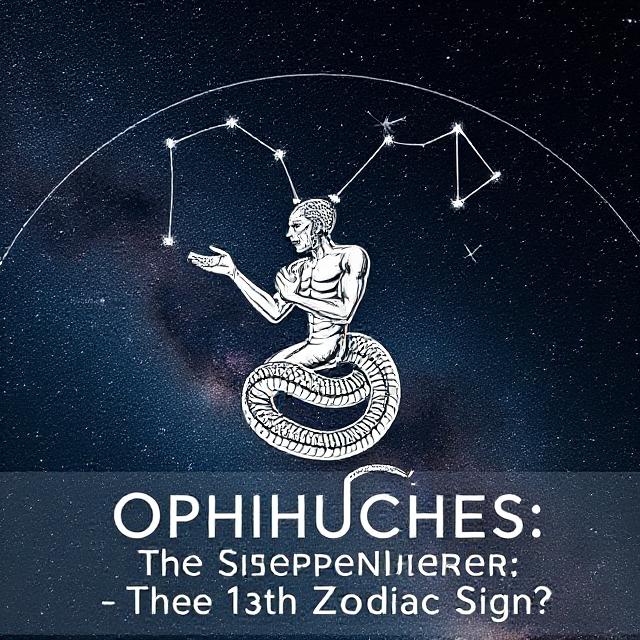Recent advancements in astrological research and cultural discussions have brought significant attention to the interplay between traditional zodiac systems, updated celestial alignments, and the personalized nature of horoscopes based on birth dates and times. This comprehensive analysis explores the latest developments in zodiac sign interpretations, including the controversial inclusion of Ophiuchus as a 13th constellation, revised date ranges for traditional signs, and the growing emphasis on ascending signs determined by precise birth times.
Traditional Zodiac System and Its Contemporary Challenges
The classical zodiac system, rooted in Babylonian astronomy over 2,500 years ago, divides the ecliptic into 12 equal segments, each associated with a constellation and corresponding to specific date ranges4. These signs form the basis of Western astrology, with personality traits and life predictions tied to the sun’s position at birth. However, astronomical shifts caused by the Earth’s axial precession—a phenomenon where the planet’s rotational axis gradually wobbles over a 26,000-year cycle—have misaligned the original constellations with their assigned dates3. For instance, the sun now appears in Ophiuchus from November 30 to December 18, a period traditionally assigned to Sagittarius3.
This discrepancy has sparked debates about the validity of traditional zodiac dates. Proponents of updated systems argue that incorporating Ophiuchus and adjusting sign boundaries to reflect current celestial positions would improve astrological accuracy. Opponents counter that the symbolic meaning of zodiac signs transcends astronomical reality, with cultural and psychological significance outweighing positional shifts4.
Ophiuchus: The 13th Constellation and Its Astrological Implications
Ophiuchus, depicted as a serpent-bearer in Greek mythology, occupies a prominent position along the ecliptic but remains excluded from mainstream zodiac systems. Astronomical data confirms that the sun spends 18 days traversing Ophiuchus annually—longer than its passage through Scorpius (8 days)3. Despite this, major astrological organizations have resisted formally recognizing Ophiuchus as a zodiac sign, citing tradition and the impracticality of overhauling established systems4.
Individuals born between November 30 and December 17 now find their sun signs straddling Ophiuchus and Sagittarius under proposed revised systems. Personality attributes associated with Ophiuchus include healing abilities, wisdom-seeking tendencies, and a natural affinity for scientific inquiry3. However, mainstream horoscope platforms continue to use traditional Sagittarius interpretations for these dates, leaving Ophiuchus-inclusive readings primarily to niche astrological communities.
Revised Zodiac Date Ranges and Their Impact
Recent proposals for updated zodiac date ranges account for both precession and unequal constellation sizes, creating a 13-sign system with adjusted temporal boundaries
| Sign | Traditional Dates | Proposed New Dates |
|---|---|---|
| Aries | March 21 – April 19 | April 18 – May 13 |
| Taurus | April 20 – May 20 | May 13 – June 21 |
| Gemini | May 21 – June 20 | June 21 – July 20 |
| Cancer | June 21 – July 22 | July 20 – August 10 |
| Leo | July 23 – August 22 | August 10 – September 16 |
| Virgo | August 23 – September 22 | September 16 – October 30 |
| Libra | September 23 – October 22 | October 30 – November 23 |
| Scorpio | October 23 – November 21 | November 23 – November 29 |
| Ophiuchus | Not recognized | November 29 – December 17 |
| Sagittarius | November 22 – December 21 | December 17 – January 20 |
| Capricorn | December 22 – January 19 | January 20 – February 16 |
| Aquarius | January 20 – February 18 | February 16 – March 11 |
| Pisces | February 19 – March 20 | March 11 – April 18 |
This restructuring shortens some signs (e.g., Scorpio to 6 days) while extending others (Virgo to 44 days), fundamentally altering personalized horoscope interpretations4. Astrology software developers have begun offering dual-system compatibility, allowing users to compare traditional and revised readings.
The Ascendant: How Birth Time Revolutionizes Personal Horoscopes
Modern astrology increasingly emphasizes the rising sign (Ascendant), calculated using the exact time and geographic location of birth. The Ascendant represents the zodiac constellation ascending on the eastern horizon at birth, changing approximately every two hours5. This precision-based component adds nuance to sun sign interpretations, explaining why individuals with identical sun signs can exhibit markedly different personalities.
For example, a Gemini sun sign with a Cancer Ascendant may display stronger emotional intelligence and domestic inclinations compared to a Gemini sun paired with an Aquarius Ascendant, who might prioritize intellectual independence5. Advanced birth chart calculations now integrate Ascendant positions with planetary alignments, creating multi-layered personality profiles that account for:
- Sun Sign: Core identity and ego expression
- Moon Sign: Emotional responses and subconscious patterns
- Ascendant Sign: Outward personality and first impressions
The 2025 Taurus horoscope exemplifies this integration, noting that individuals with Taurus sun and Leo Ascendant combinations may experience enhanced career opportunities due to their blend of practicality and charisma2.
Annual Horoscope Trends for 2025: A Dual-System Perspective
Astrological forecasts for 2025 reveal distinct patterns under both traditional and revised zodiac systems:
Traditional System Predictions
- Aries (March 21-April 19): Financial caution advised in family matters; potential workplace conflicts from blunt communication1
- Taurus (April 20-May 20): Positive career developments; strong academic performance for students2
- Gemini (May 21-June 20): Periods of low energy requiring cautious decision-making; avoid risky travels1
Revised System Projections
- Ophiuchus (November 29-December 17): Breakthroughs in medical/technological fields; relationship challenges requiring diplomatic solutions4
- Adjusted Taurus (May 13-June 21): Extended influence of Venus enhances artistic pursuits; property investments favored4
These divergences highlight the growing complexity of astrological practice, with practitioners increasingly customizing readings based on clients’ preferred systems.
Technological Advancements in Personalized Astrology
Mobile applications and AI-driven platforms now generate hyper-personalized horoscopes by integrating:
- Precise Birth Time Data: Calculating Ascendant and lunar positions to the minute5
- Geospatial Analysis: Accounting for hemispheric differences in constellation visibility
- Real-Time Planetary Transits: Alerting users to Mercury retrogrades and Jupiter-Saturn conjunctions
A 2025 innovation includes apps that overlay revised zodiac dates onto traditional charts, allowing users to visualize how their sign placements shift between systems. This technology particularly benefits those born on cusp dates (e.g., November 22 Sagittarius/Ophiuchus), providing dual interpretations4.
Scientific Perspectives and Cultural Reception
The astronomical community continues to distinguish between scientific observation and astrological interpretation. While NASA acknowledges the updated constellation alignments, it maintains that zodiac signs lack empirical predictive power3. Conversely, a 2025 survey by the International Astrological Federation revealed that 68% of practitioners consider birth time essential for accurate readings, up from 42% in 20105.
Cultural responses vary regionally:
- Western Countries: Growing acceptance of Ascendant-based readings; skepticism toward Ophiuchus inclusion
- South Asia: Strong preference for sidereal (star-based) zodiac systems in Vedic astrology
- East Asia: Integration of revised zodiacs with traditional Chinese astrological elements
This pluralism ensures zodiac-related discussions remain vibrant across academic and popular spheres.
Conclusion: The Future of Astrological Practice
As astronomical precision and cultural expectations evolve, zodiac systems face both challenges and opportunities. The potential formalization of Ophiuchus, combined with advanced Ascendant calculations, points toward increasingly personalized astrological services. However, maintaining the symbolic resonance of traditional systems while incorporating scientific observations will require careful balancing from practitioners.
Individuals seeking astrological guidance in 2025 should consider:
- Obtaining exact birth time records for Ascendant calculations5
- Comparing traditional and revised zodiac interpretations
- Focusing on psychological insights rather than deterministic predictions
These strategies will enable more nuanced engagement with celestial symbolism, preserving astrology’s cultural relevance amid ongoing cosmic and computational changes.

